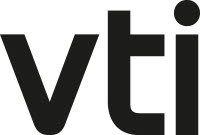No 2021:6: A review of public policy instruments to promote freight modal shift in Europe: Evidence from evaluations
Johanna Takman () and Marta Gonzalez-Aregall ()
Additional contact information
Johanna Takman: Swedish National Road & Transport Research Institute (VTI), Postal: Dept. of Transport Economics, P.O. Box 55685, SE-102 15 Stockholm, Sweden
Marta Gonzalez-Aregall: University of Gothenburg
Abstract: This paper presents a review of past and present public policy instruments in Europe promoting a modal shift of freight transports. The identified policy instruments are categorized based on several shared characteristics. To the extent that ex-post evaluations are available, policy performance is discussed, and the evaluations are compared.
The study identifies 93 public policy instruments in Europe. The most common type of policy is subsidies/grants to rail and/or water implemented at the national level. Most policy instruments only focus on the promotion of one specific transport mode, which most commonly is rail.
Evaluations of policy performance were found for 20 policy instruments. The evaluated policy instruments are mainly subsidies/grants at the national level, or policy instruments at EU level. The bias in evaluation towards these types of policy instruments is partly explained by the commitment to evaluation at EU level, and the need for permission by the European Commission to implement and prolong subsidies/grants classified as state aid. The evaluations differ in methodology and regarding what type of performance indicators that are evaluated. The evaluation guidelines and criteria that exist at EU level are often followed to some extent but interpreted differently depending on for example type of policy and data availability. Thus, comparing policy performance is difficult.
In general, there seem to be a more positive performance of policy instruments promoting a modal shift to rail than to waterborne transports. Several evaluations of EU-policy instruments describe a poor or a mixed performance of the policy instruments, while the performance of subsidies/grant at national level are often considered positive by the evaluations. A commonly mentioned factor for underachievement of the policy instruments is problems related to outreach of the policy, lack of applications, long and complicated application processes and a high administrative burden for the companies applying for financial support. Targets for the policy instruments are often broad and general, with a lack of clarity, making it difficult to meet all objectives, as well as to evaluate the policy instruments effectiveness and efficiency. Thus, well-defined targets, as well as better outreach and simpler processes could be one way forward in improving modal shift policy instruments in Europe.
Keywords: Modal shift; Freight transport; Public policy instruments; Evaluation; Effectiveness; Efficiency
JEL-codes: R42
54 pages, July 2, 2021
Full text files
VTI%202021%206.pdfFull text
- Swedish National Road & Transport Research Institute (VTI)
- See also CTS Working papers in Transport Economics
- Ordering Working Papers
- Home page for this series
Questions (including download problems) about the papers in this series should be directed to Biblioteket vid VTI ()
Report other problems with accessing this service to Sune Karlsson ().
RePEc:hhs:vtiwps:2021_006This page generated on 2024-09-13 22:17:40.

